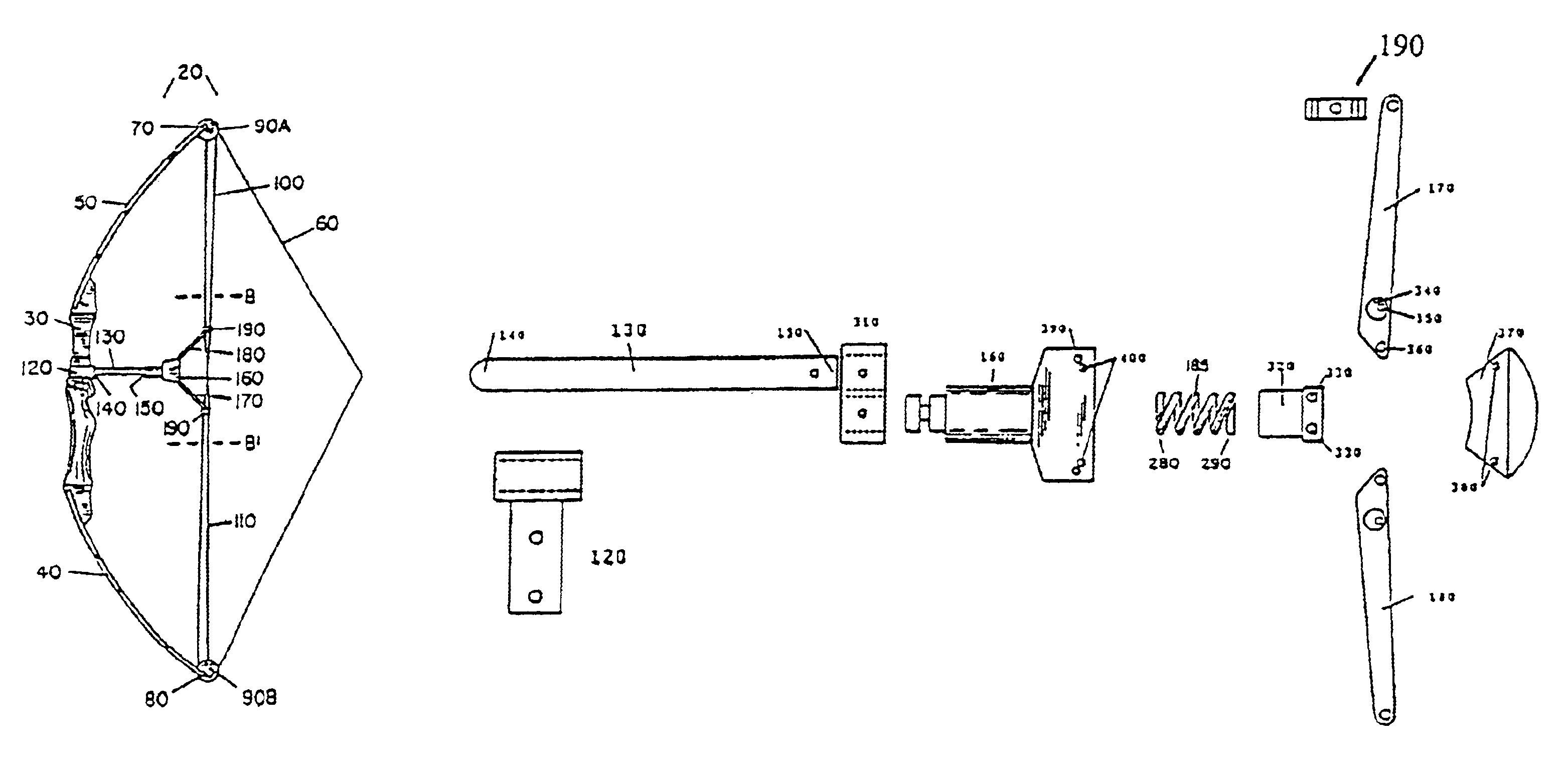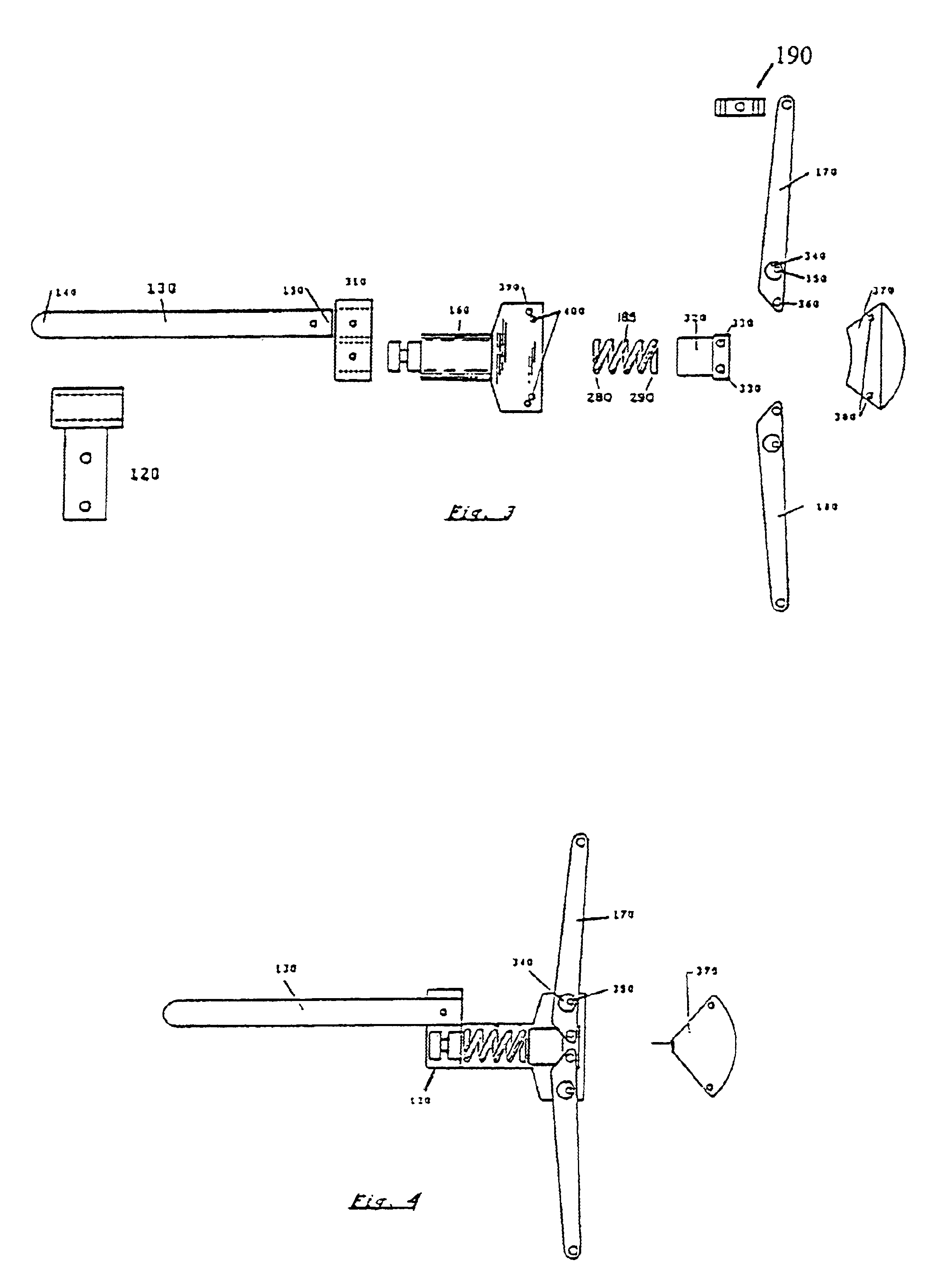Cable vibraguard
a vibraguard and cable technology, applied in the field of cable guards, can solve the problems of cable wear, noise generation upon bowstring release, and cable wear, and achieve the effects of reducing hand shock and vibration, avoiding arm fatigue, and being economical to produce and maintain
- Summary
- Abstract
- Description
- Claims
- Application Information
AI Technical Summary
Benefits of technology
Problems solved by technology
Method used
Image
Examples
Embodiment Construction
[0057]FIG. 1 is a side view illustrating the cable guard 10 of the present invention attached to a compound bow in a rest position. The cable guard 10 is used with a conventional compound bow 20 having a bow handle 30 and a pair of bow limbs 40, 50. The first bow limb 40 and the second bow limb 50 are oppositely positioned in bow handle 30. Bowstring 60 spans between a first bow tip 70 and a second bow tip 80. The bowstring 60 then continues and extends over the pulleys 90A, 90B positioned at or proximate to each of the bow tips 70, 80, and then the two ends of the bowstring 60, designated first cable end 100 and second cable end 110, cross to the opposite limb at which point they are attached to define a compound bow 20.
[0058]FIG. 2 is a side view illustrating the cable guard of the present invention attached to a compound bow in a drawn position.
[0059]FIG. 3 is a partial section taken along line A-A1 on FIG. 1 and provides greater detail of an embodiment of the cable guard 10 of t...
PUM
 Login to View More
Login to View More Abstract
Description
Claims
Application Information
 Login to View More
Login to View More - R&D
- Intellectual Property
- Life Sciences
- Materials
- Tech Scout
- Unparalleled Data Quality
- Higher Quality Content
- 60% Fewer Hallucinations
Browse by: Latest US Patents, China's latest patents, Technical Efficacy Thesaurus, Application Domain, Technology Topic, Popular Technical Reports.
© 2025 PatSnap. All rights reserved.Legal|Privacy policy|Modern Slavery Act Transparency Statement|Sitemap|About US| Contact US: help@patsnap.com



